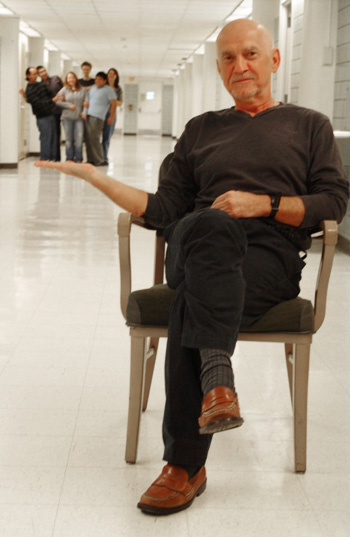What we do
In the visual cognition laboratory, led by Dr. Bruno G. Breitmeyer, researchers are
interested in several aspects of spatiotemporal vision. We take a dual, sustained-transient
channel approach, in which sustained and transient channels relate to the parallel
parvocellular and magnocellular pathways of the visual system, to investigate the
microgenesis of object perception. Here we investigate various properties and mechanisms
of visual masking experimentally and through neural network modeling. Of ongoing interest
are investigations of similarities and differences of the perceptual microgenesis
of objects defined by 1st-order (e.g., light-dark) as compared to 2nd-order (e.g.,
texture) contrasts. We also use visual masking as a technique to render stimuli invisible
and then investigating how information about stimuli that are rendered invisible by
a mask differs from information of visible/unmasked stimuli. We are particularly interested
in the types and levels of nonconscious visual processing, how the processing of the
form and surface features of objects differ at both levels of processing, and the
comparison of the deployment of space-based and feature-based attention at nonconscious
and conscious levels of processing. Our work is done in collaboration with Drs. Haluk
Ögmen and Bhavin Sheth of the University of Houston Department of Electrical and Computer
Engineering. We are also affiliated with the Center for Neuroengineering and Cognitive Science at the University of Houston.
See our publications page for more information about our work.

